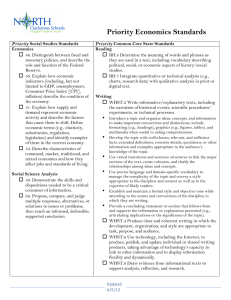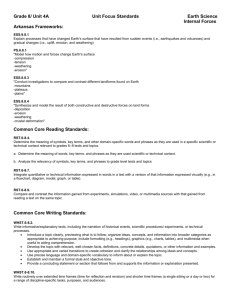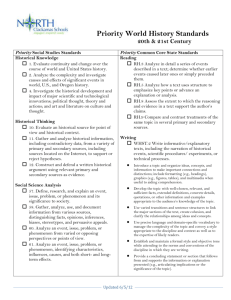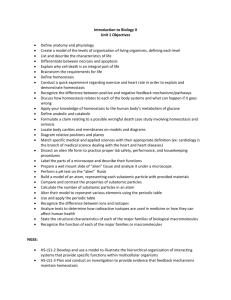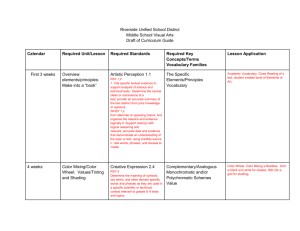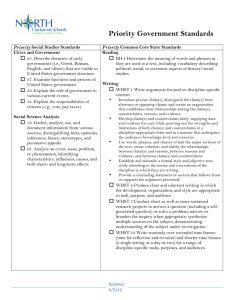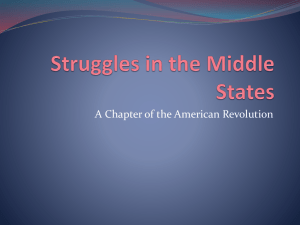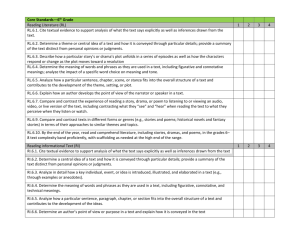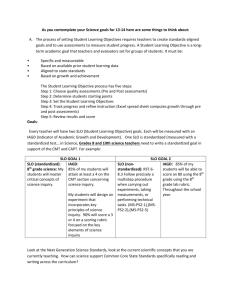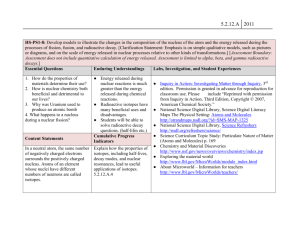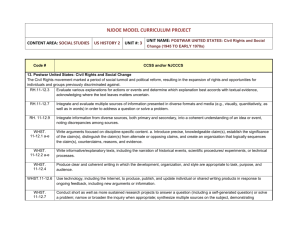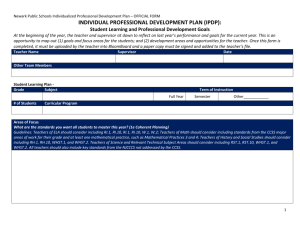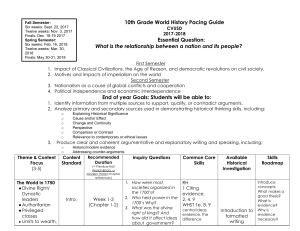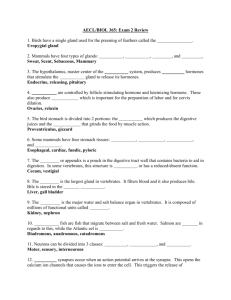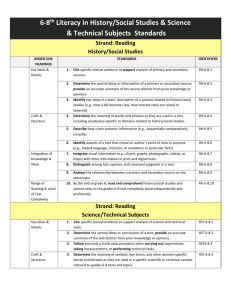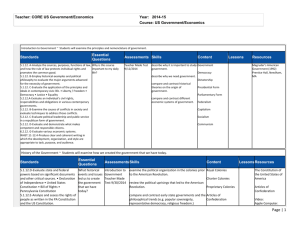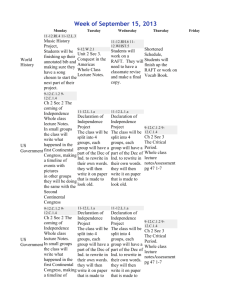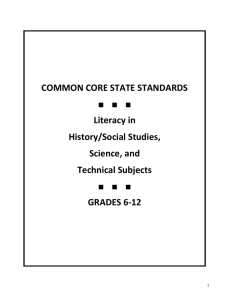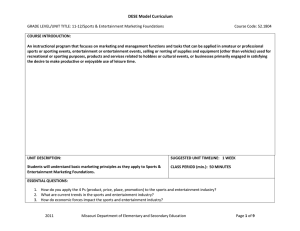Grade 7/ Unit 6Unit Focus StandardsLiving Systems Arkansas
advertisement
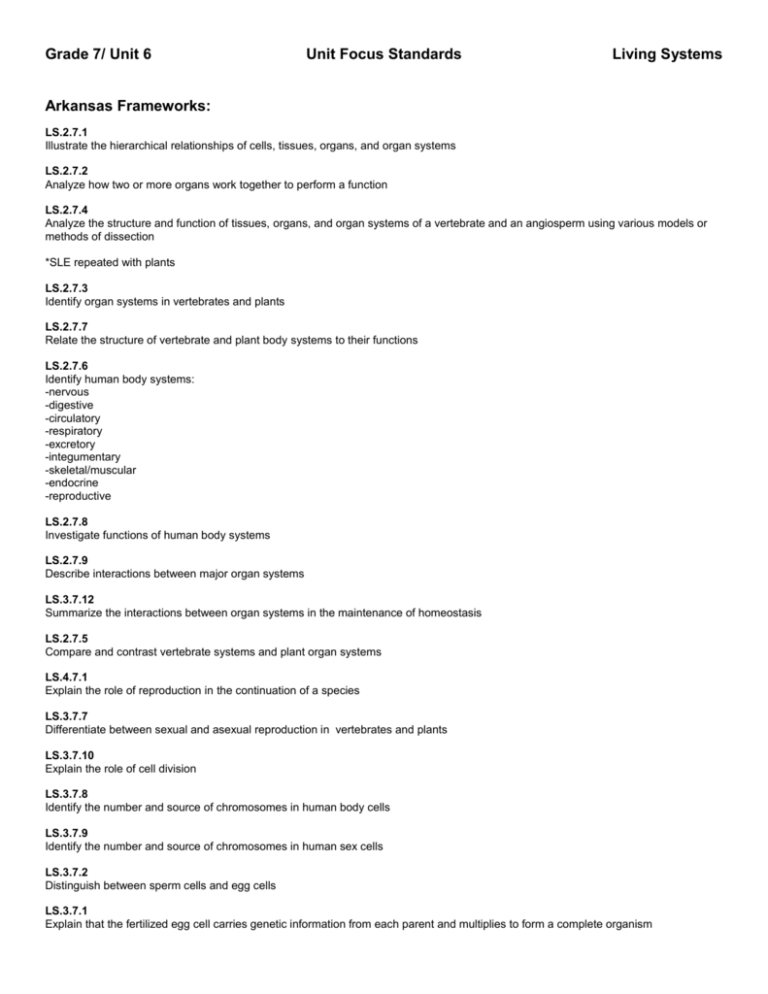
Grade 7/ Unit 6 Unit Focus Standards Living Systems Arkansas Frameworks: LS.2.7.1 Illustrate the hierarchical relationships of cells, tissues, organs, and organ systems LS.2.7.2 Analyze how two or more organs work together to perform a function LS.2.7.4 Analyze the structure and function of tissues, organs, and organ systems of a vertebrate and an angiosperm using various models or methods of dissection *SLE repeated with plants LS.2.7.3 Identify organ systems in vertebrates and plants LS.2.7.7 Relate the structure of vertebrate and plant body systems to their functions LS.2.7.6 Identify human body systems: -nervous -digestive -circulatory -respiratory -excretory -integumentary -skeletal/muscular -endocrine -reproductive LS.2.7.8 Investigate functions of human body systems LS.2.7.9 Describe interactions between major organ systems LS.3.7.12 Summarize the interactions between organ systems in the maintenance of homeostasis LS.2.7.5 Compare and contrast vertebrate systems and plant organ systems LS.4.7.1 Explain the role of reproduction in the continuation of a species LS.3.7.7 Differentiate between sexual and asexual reproduction in vertebrates and plants LS.3.7.10 Explain the role of cell division LS.3.7.8 Identify the number and source of chromosomes in human body cells LS.3.7.9 Identify the number and source of chromosomes in human sex cells LS.3.7.2 Distinguish between sperm cells and egg cells LS.3.7.1 Explain that the fertilized egg cell carries genetic information from each parent and multiplies to form a complete organism Grade 7/ Unit 6 Unit Focus Standards Living Systems LS.3.7.3 Compare and contrast the structure and function of the sperm cell and the egg cell in vertebrates and plants and their role in sexual reproduction LS.3.7.4 Investigate and analyze the development of embryos LS.3.7.5 Dissect a poultry egg to analyze its structure (e.g., paper, plastic, or clay models, virtual dissection, or specimen dissection) LS.3.7.6 Dissect a flower to analyze the reproductive system of angiosperms LS.3.7.7 Differentiate between sexual and asexual reproduction in vertebrates and plants Common Core Reading Standards: RST.6-8.4. Determine the meaning of symbols, key terms, and other domain-specific words and phrases as they are used in a specific scientific or technical context relevant to grades 6–8 texts and topics. a. Determine the meaning of words, key terms, and phrases as they are used scientific or technical context. b. Analyze the relevancy of symbols, key terms, and phrases to grade level texts and topics RST.6-8.6. Analyze the author’s purpose in providing an explanation, describing a procedure, or discussing an experiment in a text. RST.6-8.10. By the end of grade 8, read and comprehend science/technical texts in the grades 6–8 text complexity band independently and proficiently. Common Core Writing Standards: WHST.6-8.1. Write arguments focused on discipline-specific content. Introduce claim(s) about a topic or issue, acknowledge and distinguish the claim(s) from alternate or opposing claims, and organize the reasons and evidence logically. Support claim(s) with logical reasoning and relevant, accurate data and evidence that demonstrate an understanding of the topic or text, using credible sources. Use words, phrases, and clauses to create cohesion and clarify the relationships among claim(s), counterclaims, reasons, and evidence. Establish and maintain a formal style. Provide a concluding statement or section that follows from and supports the argument presented. WHST.6-8.2. Write informative/explanatory texts, including the narration of historical events, scientific procedures/ experiments, or technical processes. Introduce a topic clearly, previewing what is to follow; organize ideas, concepts, and information into broader categories as appropriate to achieving purpose; include formatting (e.g., headings), graphics (e.g., charts, tables), and multimedia when useful to aiding comprehension. Develop the topic with relevant, well-chosen facts, definitions, concrete details, quotations, or other information and examples. Use appropriate and varied transitions to create cohesion and clarify the relationships among ideas and concepts. Use precise language and domain-specific vocabulary to inform about or explain the topic. Establish and maintain a formal style and objective tone. Provide a concluding statement or section that follows from and supports the information or explanation presented. WHST.6-8.4. Produce clear and coherent writing in which the development, organization, and style are appropriate to task, purpose, and audience. Grade 7/ Unit 6 Unit Focus Standards Living Systems WHST.6-8.5. With some guidance and support from peers and adults, develop and strengthen writing as needed by planning, revising, editing, rewriting, or trying a new approach, focusing on how well purpose and audience have been addressed. WHST.6-8.6. Use technology, including the Internet, to produce and publish writing and present the relationships between information and ideas clearly and efficiently. WHST.6-8.7. Conduct short research projects to answer a question (including a self-generated question), drawing on several sources and generating additional related, focused questions that allow for multiple avenues of exploration. WHST.6-8.8. Gather relevant information from multiple print and digital sources, using search terms effectively; assess the credibility and accuracy of each source; and quote or paraphrase the data and conclusions of others while avoiding plagiarism and following a standard format for citation. WHST.6-8.9. Draw evidence from informational texts to support analysis reflection, and research. WHST.6-8.10. Write routinely over extended time frames (time for reflection and revision) and shorter time frames (a single sitting or a day or two) for a range of discipline-specific tasks, purposes, and audiences.
